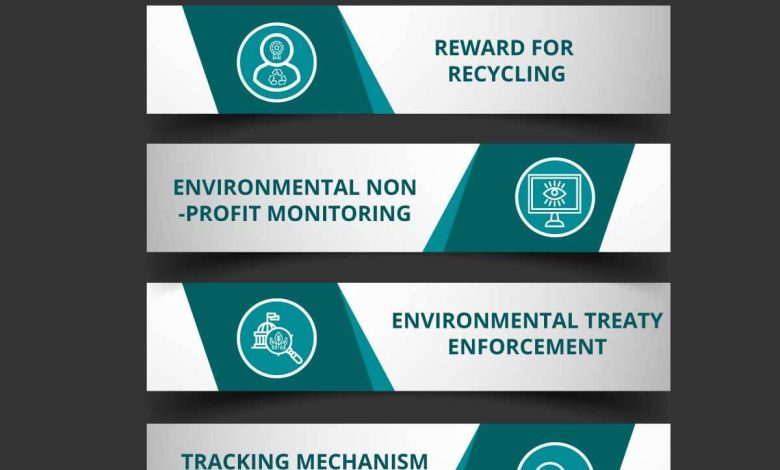Blockchain for Environmental Conservation: Real Use Cases

- Introduction to Blockchain Technology
- Benefits of Blockchain for Environmental Conservation
- Real-world Applications of Blockchain in Conservation Efforts
- Challenges and Limitations of Implementing Blockchain in Environmental Conservation
- Success Stories of Blockchain in Conservation Projects
- Future Outlook: How Blockchain Can Revolutionize Environmental Conservation
Introduction to Blockchain Technology
Blockchain technology is a decentralized, distributed ledger system that securely records transactions across a network of computers. It is best known for its association with cryptocurrencies like Bitcoin, but its applications extend far beyond digital currencies. Blockchain technology has the potential to revolutionize various industries, including environmental conservation.
One of the key features of blockchain technology is its ability to create transparent and immutable records of transactions. This means that once a transaction is recorded on the blockchain, it cannot be altered or deleted. This feature makes blockchain technology ideal for tracking and verifying transactions related to environmental conservation efforts.
By using blockchain technology, organizations can create a secure and transparent system for tracking donations, carbon credits, and other resources dedicated to environmental conservation projects. This can help increase accountability and trust among stakeholders, as all transactions are recorded on a tamper-proof ledger that can be accessed by anyone with the necessary permissions.
Furthermore, blockchain technology can facilitate the creation of smart contracts, which are self-executing contracts with the terms of the agreement directly written into code. Smart contracts can automate various processes related to environmental conservation, such as verifying the authenticity of carbon credits or ensuring that donations are allocated to the intended projects.
Overall, blockchain technology has the potential to revolutionize environmental conservation efforts by increasing transparency, accountability, and efficiency in the management of resources. By leveraging the unique features of blockchain technology, organizations can create innovative solutions to address pressing environmental challenges and work towards a more sustainable future.
Benefits of Blockchain for Environmental Conservation
Blockchain technology offers numerous benefits for environmental conservation efforts. By leveraging blockchain, organizations can enhance transparency, traceability, and accountability in their conservation initiatives. This innovative technology enables secure and immutable record-keeping, which can help in monitoring and verifying various environmental activities.
One of the key advantages of blockchain for environmental conservation is its ability to streamline supply chains. Through blockchain, stakeholders can track the flow of goods and ensure that products are sourced sustainably. This can help in reducing illegal logging, poaching, and other harmful practices that contribute to environmental degradation.
Furthermore, blockchain can facilitate the creation of digital identities for natural assets such as forests, wildlife, and water bodies. By assigning unique digital tokens to these assets, their ownership and usage rights can be securely recorded on the blockchain. This can help in preventing unauthorized exploitation and promoting responsible stewardship of natural resources.
Another significant benefit of blockchain for environmental conservation is its potential to incentivize sustainable practices. Through the use of smart contracts and tokenized rewards, individuals and organizations can be encouraged to participate in conservation activities such as reforestation, wildlife protection, and carbon offsetting. This can create a more sustainable and eco-friendly economy.
Real-world Applications of Blockchain in Conservation Efforts
Blockchain technology has shown great promise in revolutionizing conservation efforts around the world. By providing a secure and transparent way to track transactions and data, blockchain can help ensure the integrity of conservation projects and initiatives. Here are some real-world applications of blockchain in conservation efforts:
- Supply chain transparency: Blockchain can be used to track the movement of goods and materials in conservation projects, ensuring that they are sourced sustainably and ethically.
- Carbon credit trading: Blockchain technology can facilitate the trading of carbon credits, allowing organizations to offset their carbon footprint and support conservation projects.
- Wildlife tracking: By using blockchain to record data on wildlife populations and movements, conservationists can better understand and protect endangered species.
- Donation tracking: Blockchain can provide transparency in donation tracking, allowing donors to see exactly how their contributions are being used in conservation efforts.
- Smart contracts: Smart contracts powered by blockchain technology can automate and enforce agreements between different parties involved in conservation projects, streamlining processes and reducing the risk of fraud.
Overall, blockchain technology has the potential to transform the way conservation efforts are carried out, making them more efficient, transparent, and impactful. By leveraging the power of blockchain, conservationists can work together to protect our planet for future generations.
Challenges and Limitations of Implementing Blockchain in Environmental Conservation
Implementing blockchain in environmental conservation comes with its own set of challenges and limitations that need to be carefully considered. While blockchain technology has the potential to revolutionize the way environmental data is managed and shared, there are several obstacles that need to be addressed:
- **Complexity**: The complexity of blockchain technology can be a barrier to adoption, as it requires specialized knowledge and expertise to implement and maintain.
- **Scalability**: Blockchain networks can struggle with scalability issues, especially when it comes to handling large volumes of environmental data.
- **Energy consumption**: The energy consumption associated with blockchain mining can be a concern for environmentally conscious organizations.
- **Regulatory challenges**: The regulatory landscape surrounding blockchain technology is still evolving, which can create uncertainty for organizations looking to implement it in environmental conservation efforts.
- **Cost**: Implementing blockchain technology can be costly, especially for organizations with limited resources.
Despite these challenges, there are ways to overcome them and harness the power of blockchain for environmental conservation. By working together to address these limitations, organizations can unlock the full potential of blockchain technology to drive positive change for the environment.
Success Stories of Blockchain in Conservation Projects
Blockchain technology has been successfully implemented in various conservation projects around the world, showcasing its potential to revolutionize the way environmental initiatives are managed and funded. Here are some inspiring success stories of blockchain in conservation projects:
- **Wildlife Tracking:** One of the most prominent use cases of blockchain in conservation is wildlife tracking. By using blockchain technology, conservationists can securely track the movement of endangered species, monitor their habitats, and detect any illegal activities such as poaching. This has significantly improved the efficiency and accuracy of wildlife conservation efforts.
- **Carbon Credits:** Blockchain has also been utilized in carbon credit trading, allowing organizations to transparently buy and sell carbon credits to offset their carbon footprint. This not only helps in reducing greenhouse gas emissions but also promotes sustainable practices among businesses and individuals.
- **Supply Chain Transparency:** Another area where blockchain has made a significant impact is in ensuring supply chain transparency. By recording every step of the supply chain on a blockchain ledger, companies can verify the origin of products, track their journey from source to consumer, and ensure that they are produced ethically and sustainably.
- **Donation Tracking:** Blockchain technology has enabled more transparent and accountable donation tracking in conservation projects. Donors can now track how their contributions are being used in real-time, ensuring that their funds are being utilized effectively for environmental conservation.
These success stories demonstrate the immense potential of blockchain technology in transforming the landscape of environmental conservation. By leveraging the transparency, security, and immutability of blockchain, conservationists can overcome many of the challenges they face in managing and funding conservation projects, ultimately leading to a more sustainable and environmentally conscious future.
Future Outlook: How Blockchain Can Revolutionize Environmental Conservation
Looking ahead, the potential of blockchain technology to revolutionize environmental conservation is immense. By leveraging the transparency, security, and efficiency of blockchain, organizations can better track and monitor environmental data, ensure the authenticity of carbon credits, and streamline supply chains for sustainable products.
One of the key benefits of blockchain in environmental conservation is its ability to create a tamper-proof record of transactions and data. This can help prevent fraud and ensure that environmental initiatives are carried out as intended. Additionally, blockchain can enable greater transparency in the allocation of funds for conservation projects, allowing donors to track their contributions and ensure they are being used effectively.
Furthermore, blockchain can facilitate the creation of decentralized marketplaces for trading carbon credits and other environmental assets. This can help incentivize businesses to reduce their carbon footprint and invest in sustainable practices. By creating a more efficient and transparent market for environmental assets, blockchain can drive greater investment in conservation efforts.
Overall, the future outlook for blockchain in environmental conservation is promising. As more organizations recognize the potential of this technology to drive positive change, we can expect to see innovative solutions emerge that leverage blockchain to protect our planet for future generations.



